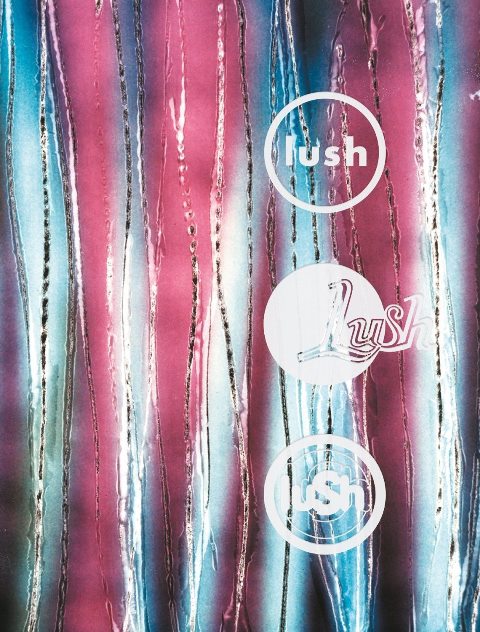Reissue CDs Weekly: Lush | reviews, news & interviews
Reissue CDs Weekly: Lush
Reissue CDs Weekly: Lush
Box set celebrates the recently reformed shoegazers who embraced Britpop

The news that Lush have reformed didn’t come as surprise. Their comparable contemporaries Ride and Slowdive had also done so over the past couple of years, and My Bloody Valentine – an influence looming over all three – returned in 2007 after over a decade’s abscence. Unlike the others, Lush, who were on 4AD rather than Creation, have reissued their complete catalogue as a box set during the run-up to re-hitting stages next May.
With Lush, editing is probably necessary to make a coherent musical statement. Up to 1994 they were, broadly, shoegazers. Then, from the early 1996 single "Single Girl" until their officially announced split in 1998, they abandoned the impressionsitic for straightforward Britpop-like pop. Sudden shifts of style weren’t atypical in the new, post-Oasis commercial environment: Ride became rockier from 1994, a process culminating in the clod-hopping Tarantula album. Lush’s change in musical direction brought chart success. Up to "Single Girl", their singles had scraped the lower reaches of the charts. Afterwards, they went Top 30.
 Over its five CDs, Chorus – presumably named after the guitar effect – tells the full story in terms of the music. Surprisingly, there is no essay so the tale overall is not told. Why the Britpop era effectively turned Lush into another band is, unfortunately, not explained. A case-bound, book-style set, Chorus is a lovely object and looks like a classic 4AD release. The three albums proper, Spooky (1992), Split (1994) and Lovelife (1996) are bookended by the two compilations Gala (1990) and Topolino (1996). With an album per disc, the bonus tracks on each include demos, radio sessions, non-album tracks and compilation appearances. The annotation does not include details of the original release of the previously issued bonuses, and this oversight renders it impossible to relate non-album tracks to their original parent album, single, EP or compilation album.
Over its five CDs, Chorus – presumably named after the guitar effect – tells the full story in terms of the music. Surprisingly, there is no essay so the tale overall is not told. Why the Britpop era effectively turned Lush into another band is, unfortunately, not explained. A case-bound, book-style set, Chorus is a lovely object and looks like a classic 4AD release. The three albums proper, Spooky (1992), Split (1994) and Lovelife (1996) are bookended by the two compilations Gala (1990) and Topolino (1996). With an album per disc, the bonus tracks on each include demos, radio sessions, non-album tracks and compilation appearances. The annotation does not include details of the original release of the previously issued bonuses, and this oversight renders it impossible to relate non-album tracks to their original parent album, single, EP or compilation album.
Matters are further complicated when the band’s story overall is pondered. Despite ostensibly being “hullo clouds, hullo sky” shoegazers, they had no problems with out-and-out pop: early on, they covered ABBA’s “Hey Hey Helen”. They signed with 4AD. The label's brightest stars had been Cocteau Twins, whose Robin Guthrie was their producer from 1989 to 1991. Lush’s sonic architecture overtly reflected that of Cocteau Twins. Lush changed bass players mid-stream when Steve Rippon was replaced by Phil King. The band’s song-writing frontline, Emma Anderson and Miki Berenyi, were ubiquitous London scenesters and music press coverage of their exploits distracted attention from the music. Most awfully, their drummer Chris Acland committed suicide in late 1996. The band never played again after that, and the spilt was announced in 1998.
'Chorus' amply demonstrates that Lush were a musical game of two halves
What is left, with Chorus, is the music. At their best, on Discs One and Two, Lush were – and still sound – fantastic. They dealt in a rock-grounded shoegazing. The vocals were wraithlike and the guitars shimmered but the drums and bass had the forward motion of a band which wanted audiences to move. Everything, bar a couple of remixes, on the first two discs needs to be heard.
With Disc Three and Split things are less balanced. King is on board and Guthrie is no longer their producer. The songs are as good as before, but a more direct production removes the music’s former inscrutability. As for the unambitious Britpop-inspired Lovelife, as Miss Jean Brodie said, “For those who like that sort of thing, that is the sort of thing they like.”
Chorus amply demonstrates that Lush was a musical game of two halves. From the perspective of now, their earlier, more sensitive material resonates most as it did not react to a sudden trend and has a greater depth. But this was not how they reached their commercial peak. Newly recorded material will be issued to accompany the reformation. It will be fascinating to see which of the two, virtually irreconcilable, versions of the old Lush wins through next year and which bubbles up on the new material. Only then will Lush reveal how they would like to be seen.
The future of Arts Journalism
You can stop theartsdesk.com closing!
We urgently need financing to survive. Our fundraising drive has thus far raised £49,000 but we need to reach £100,000 or we will be forced to close. Please contribute here: https://gofund.me/c3f6033d
And if you can forward this information to anyone who might assist, we’d be grateful.

Subscribe to theartsdesk.com
Thank you for continuing to read our work on theartsdesk.com. For unlimited access to every article in its entirety, including our archive of more than 15,000 pieces, we're asking for £5 per month or £40 per year. We feel it's a very good deal, and hope you do too.
To take a subscription now simply click here.
And if you're looking for that extra gift for a friend or family member, why not treat them to a theartsdesk.com gift subscription?
more New music
 Album: Night Tapes - portals//polarities
Estonian-voiced, London-based electro-popsters debut album marks them as one to watch for
Album: Night Tapes - portals//polarities
Estonian-voiced, London-based electro-popsters debut album marks them as one to watch for
 Album: Mulatu Astatke - Mulatu Plays Mulatu
An album full of life, coinciding with a 'farewell tour'
Album: Mulatu Astatke - Mulatu Plays Mulatu
An album full of life, coinciding with a 'farewell tour'
 Music Reissues Weekly: Sly and the Family Stone - The First Family: Live At Winchester Cathedral 1967
Must-have, first-ever release of the earliest document of the legendary soul outfit
Music Reissues Weekly: Sly and the Family Stone - The First Family: Live At Winchester Cathedral 1967
Must-have, first-ever release of the earliest document of the legendary soul outfit
 Album: Robert Plant - Saving Grace
Mellow delight from former Zep lead
Album: Robert Plant - Saving Grace
Mellow delight from former Zep lead
 Brìghde Chaimbeul, Round Chapel review - enchantment in East London
Inscrutable purveyor of experimental Celtic music summons creepiness and intensity
Brìghde Chaimbeul, Round Chapel review - enchantment in East London
Inscrutable purveyor of experimental Celtic music summons creepiness and intensity
 Album: NewDad - Altar
The hard-gigging trio yearns for old Ireland – and blasts music biz exploitation
Album: NewDad - Altar
The hard-gigging trio yearns for old Ireland – and blasts music biz exploitation
 First Person: Musician ALA.NI on how thoughts of empire and reparation influenced a song
She usually sings about affairs of the heart - 'TIEF' is different, explains the star
First Person: Musician ALA.NI on how thoughts of empire and reparation influenced a song
She usually sings about affairs of the heart - 'TIEF' is different, explains the star
 Album: The Divine Comedy - Rainy Sunday Afternoon
Neil Hannon takes stock, and the result will certainly keep his existing crowd happy
Album: The Divine Comedy - Rainy Sunday Afternoon
Neil Hannon takes stock, and the result will certainly keep his existing crowd happy
 Music Reissues Weekly: Robyn - Robyn 20th-Anniversary Edition
Landmark Swedish pop album hits shops one more time
Music Reissues Weekly: Robyn - Robyn 20th-Anniversary Edition
Landmark Swedish pop album hits shops one more time
 Album: Twenty One Pilots - Breach
Ohio mainstream superstar duo wrap up their 10 year narrative
Album: Twenty One Pilots - Breach
Ohio mainstream superstar duo wrap up their 10 year narrative
 Album: Ed Sheeran - Play
A mound of ear displeasure to add to the global superstar's already gigantic stockpile
Album: Ed Sheeran - Play
A mound of ear displeasure to add to the global superstar's already gigantic stockpile
 Album: Motion City Soundtrack - The Same Old Wasted Wonderful World
A solid return for the emo veterans
Album: Motion City Soundtrack - The Same Old Wasted Wonderful World
A solid return for the emo veterans

Add comment